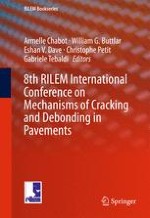This book presents the latest advances in research to analyze mechanical damage and its detection in multilayer systems. The contents are linked to the Rilem TC241 - MCD scientific activities and the proceedings of the 8th RILEM International Conference on Mechanisms of Cracking and Debonding in Pavements (MCD2016). MCD2016 was hosted by Ifsttar and took place in Nantes, France, on June 7-9, 2016. In their lifetime, pavements undergo degradation due to different mechanisms of which cracking is among the most important ones. The damage and the fracture behavior of all its material layers as well as interfaces must be understood. In that field, the research activities aims to develop a deeper fundamental understanding of the mechanisms responsible for cracking and debonding in asphalt concrete and composite (e.g. asphalt overlays placed on PCC or thin cement concrete overlay placed on asphalt layer) pavement systems.
